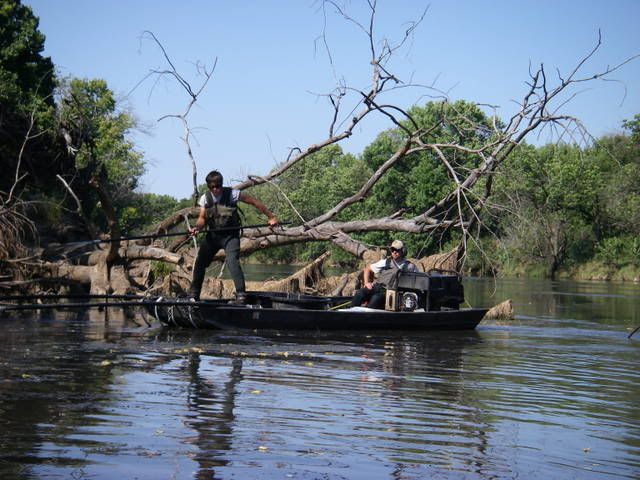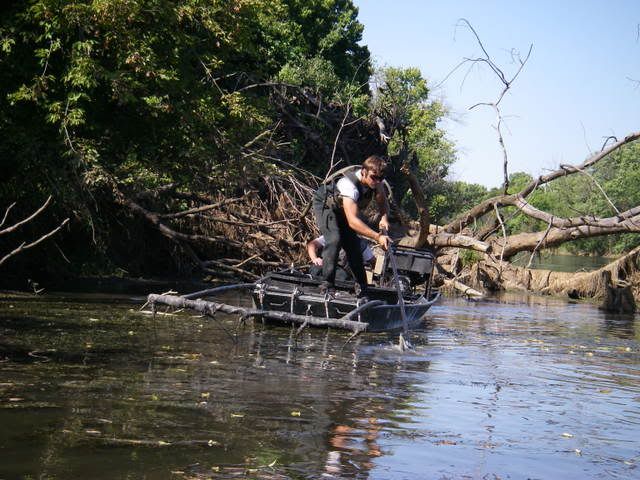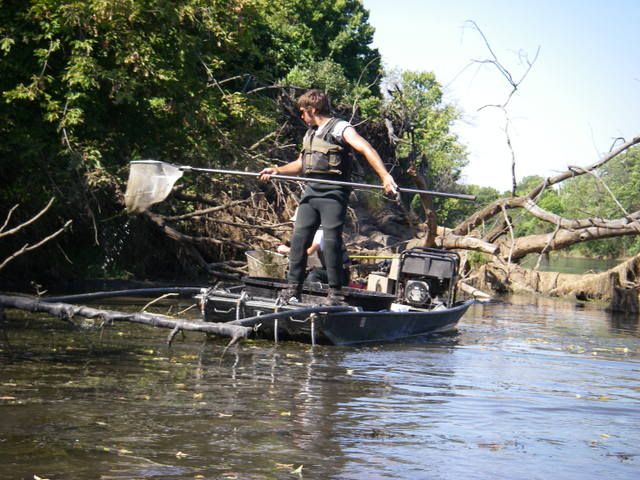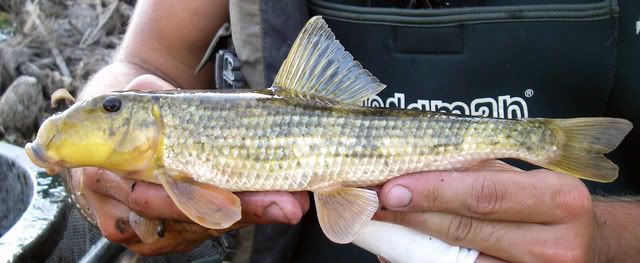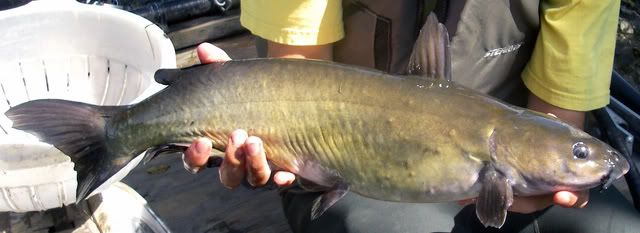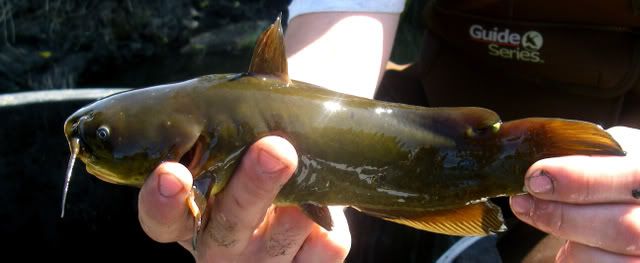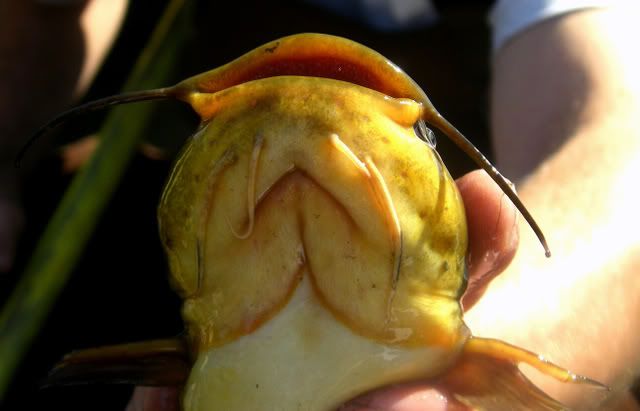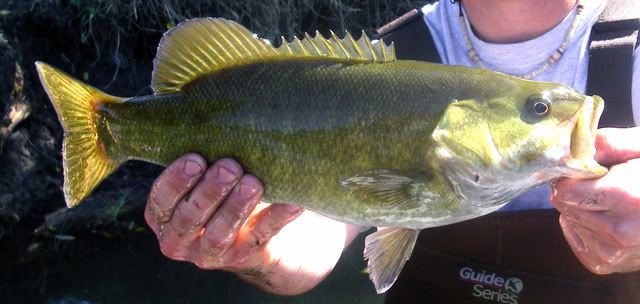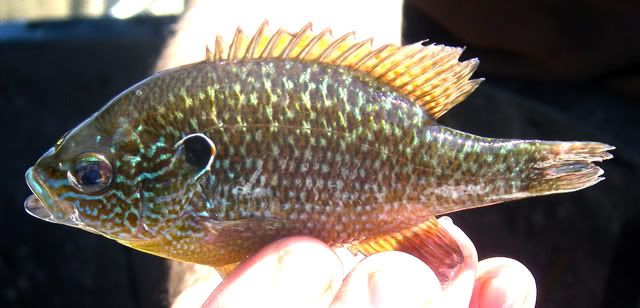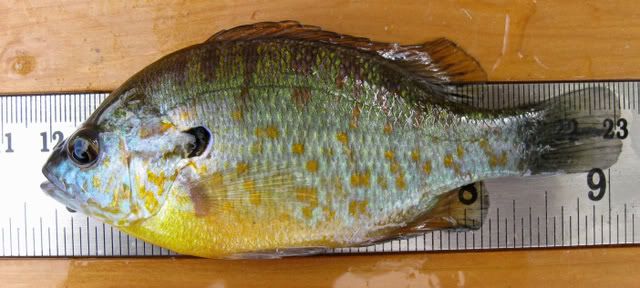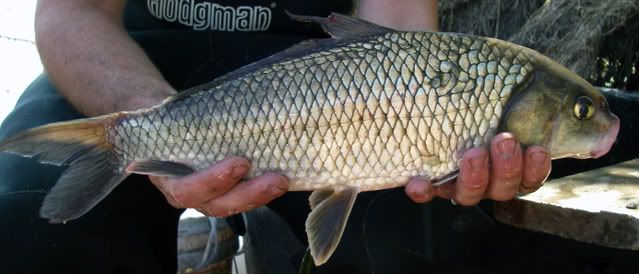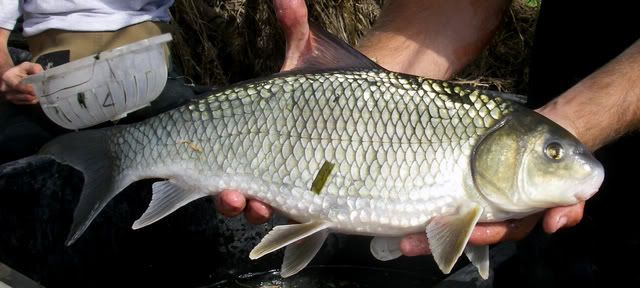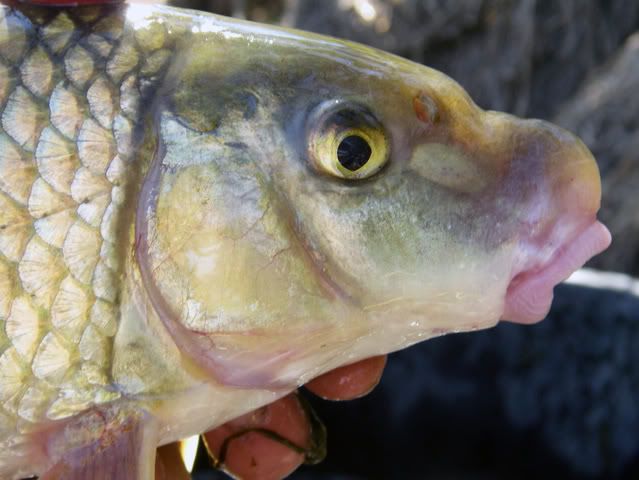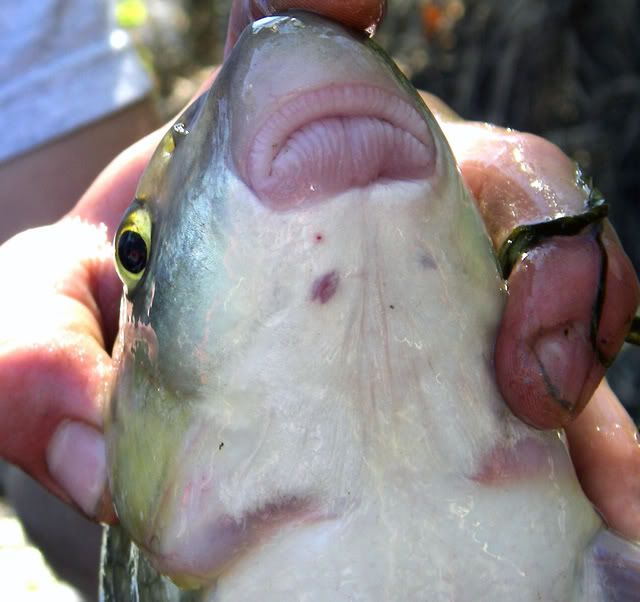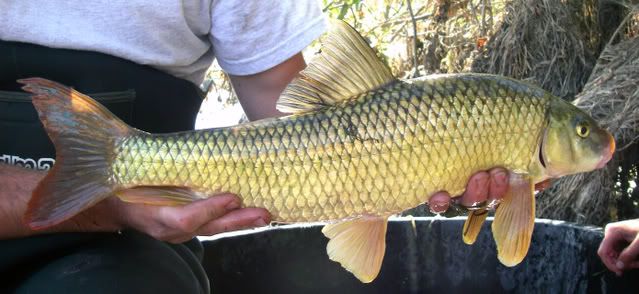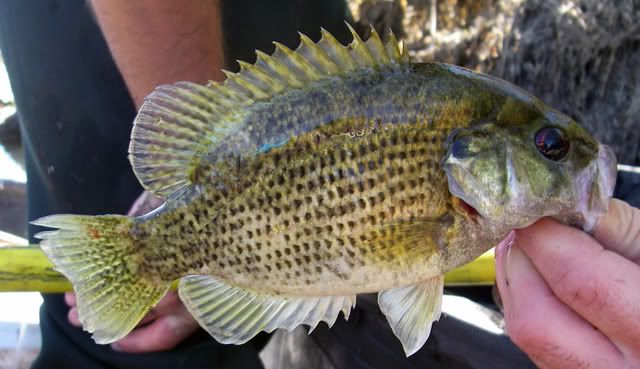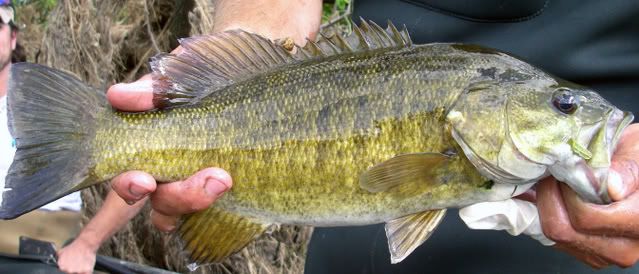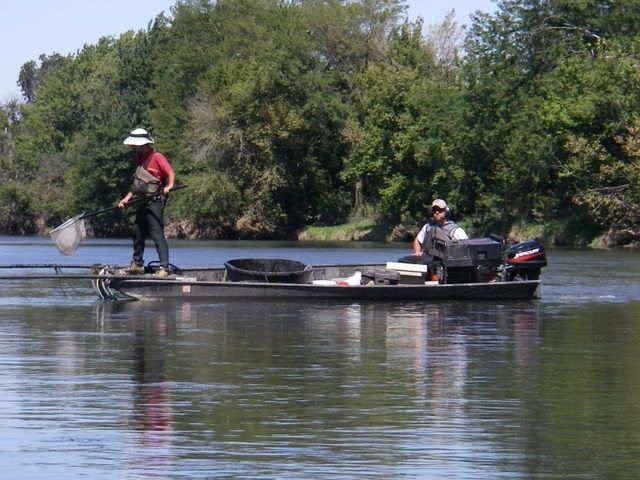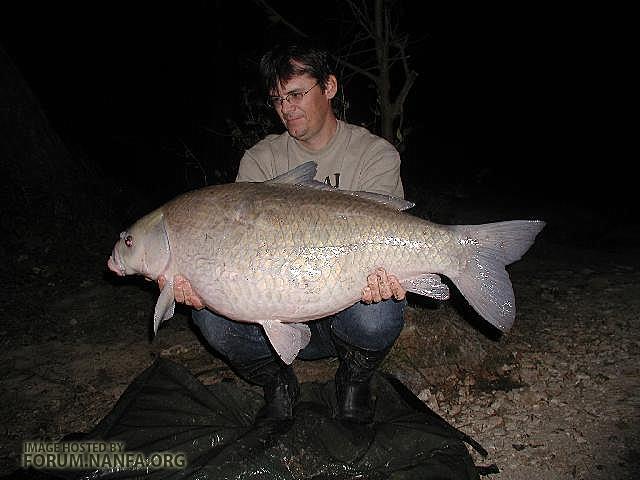Location: DuPage River in Shorewood, IL. At the lowhead dam upstream of SR 52.
Water Level: Normal for this time of year. Depth sampled ranged from a shallow riffle below the dam to areas of 5’ deep or more underneath two of the bridges.
Water Quality: Surprisingly clear with good flow. Some siltation on the cobble. Lots of enrichment apparent by the abundant macrophytes. This area has tons of vegetation. It made up 90% of the available cover.
Water Temp.: 18.5*C
Substrate: Cobble and some large rocks. Many macrophytes, including plenty of Valsineria. The mats of dislodged plants created overhead shelter near the shoreline and under the bridges which became ideal fish habitat.
Collected:
Common Carp (Cyprinus carpio) – unfortunately there were lots of really big carp here. They could be seem swimming near the vegetation mats. Also, if there was a break in the weed beds, large carp could be seen swimming with Shorthead Redhorse.
Hornyhead Chub (Nocomis biguttatus) – a few large ones were caught. They could be seen swimming around near the gravel riffles.
Central Stoneroller Minnow (Campostoma anomalum pullum) – only one was caught, but there were probably plentiful on the difficult to sample riffle area here.
White Sucker (Catostomus commersonii commersonii)

- this river was a little large to still be seeing White Sucker, as opposed to the other sucker species found in this river.
Shorthead Redhorse (Moxostoma macrolepidotum) – a few were found near the areas where there was a break in the extensive weed beds.
Northern Hogsucker (Hypentelium nigricans)

– one large one was found near a group of large Smallmouth Bass. The spot that the Hogsucker was in was under a bridge where there were no weed beds. It is probably difficult for a Hogsucker to root around for food in those massive weed beds.
Channel Catfish (Ictalurus punctatus)
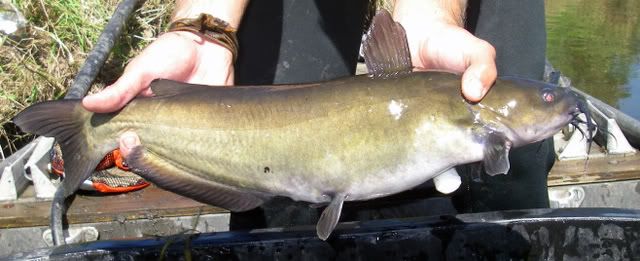
- a few large ones were caught just downstream of the dam underneath the bridge. They were under the large weed mats that were floating there. There were quite a few very large fish underneath that bridge. A few were also caught that were found buried in the thick vegetation in the middle of the river.
Flathead Catfish (Pylodictus olivaris)

- one large one was found alongside large Channel Catfish under the bridge right below the dam. Right under that bridge would be a good place to fish for a variety of gamefish.
Stonecat Madtom (Noturus flavus) – a few were collected in the thick vegetation in areas where the current was at its highest velocity. They were large ones too. Averaging nearly 5”.
Tadpole Madtom (Noturus gyrinus) – some small ones were found near the shoreline. The banks were grass lined and the Tadpole Madtom likes to bury itself in this type of cover. These fish avoided the current.
Blackstipe Topminnow (Fundulus notatus) – only one was collected here. The current below the dam was almost too fast to find many topminnows.
Black Crappie (Pomoxis nigromaculatus)
Rock Bass (Ambloplites rupestris) – lots of very large Rock Bass were collected here. Everywhere that there was any sort of habitat (i.e. weeds, floating vegetation mats, rocks) there were large Rock Bass.
Northern Largemouth Bass (Micropterus salmoides salmoides)
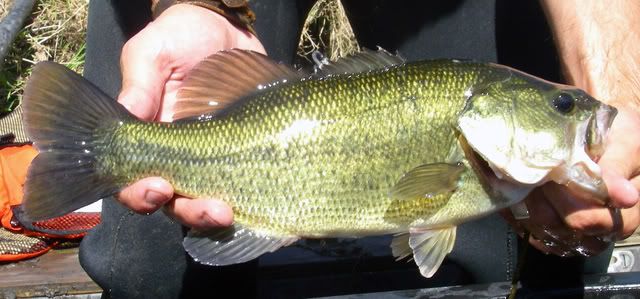
- only a few were caught. This one pictured was the largest of them. This was more of a Smallmouth Bass area on the river than a Largemouth area.
Northern Smallmouth Bass (Micropterus dolomieu dolomieu)
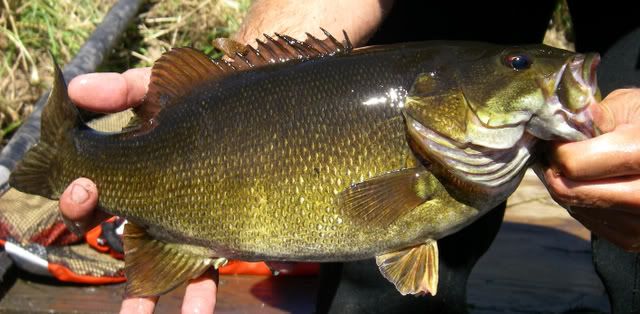
- we found lots of very big Smallmouth Bass here. We also found lots of young of year Smallmouth Bass. Curiously, we didn’t find any year 1 or 2 Smallmouth Bass. There could be a high amount of cannibalism here. There certainly weren’t lots of forage fish (cyprinids). This could be the case in this part of the river. The largest bass were found underneath the floating vegetation mats. This big one pictured was found near the only N. Hogsucker.
Bluegill Sunfish (Lepomis macrochirus macrochirus)
Green Sunfish (Lepomis cyanellus)
Northern Longear Sunfish (Lepomis megalotis peltastes) – only a few were found.
Redear Sunfish (Lepomis microlophus) – only one was collected of these. There was a very good variety of sunfish here. This was my first time seeing a Redear Sunfish.
Hybrid Sunfish (Lepomis hybrid)
Banded Darter (Etheostoma zonale) – only one was caught on the riffle right below the dam. This is an example of how ineffective the method of sampling is for riffle dwelling fish. Often times when Banded Darters are present, they are present in large numbers.
Notes: Electrofished via a boat. This place looks like a great place to launch a canoe and fish underneath the bridges. There was a definite lack of cyprinids here which is odd because most of the fish looked to be well fed. I’m sure that the plants played host to numerous aquatic insects which the fish are feeding on though.



